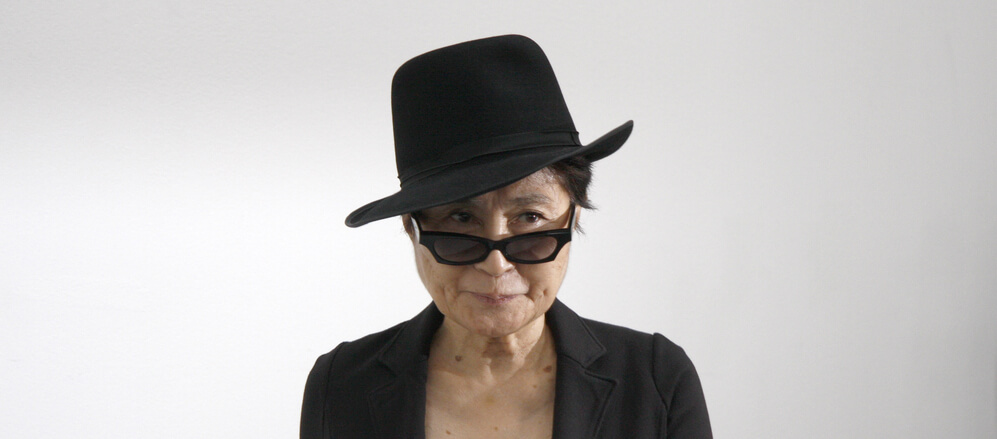

l'wren scott
What’s Wrong With Yoko Ono, Anyway?
It's 2014, and we're still using the term "Yoko-ing"?
This article was made possible because of the generous support of DAME members. We urgently need your help to keep publishing. Will you contribute just $5 a month to support our journalism?
Continuing their streak of bad behavior concerning the death of designer L’Wren Scott, the New York Post published an awful piece last week claiming that Mick Jagger’s bandmates called Scott, his longtime girlfriend, “Yoko” and labeled her as “too controlling.” The Rolling Stones haven’t issued any kind of statement, though a “band insider” refutes the story on Metro and a band rep, when contacted by DAME, called it “inaccurate.” Presumably the item is too sordid to bother with right now, or ever: On Tuesday, Jagger and his family attended Scott’s private burial at Hollywood Forever in Los Angeles, where they read a poem and a psalm in her honor.
Everyone knows that the tireless Rolling Stones, 52 years deep into their career, aren’t so easy to render apart but the bigger question is this: Why does the played-out “Yoko” stereotype still have any traction in 2014? Can this be the year—with Yoko Ono now 81 years old—that we finally put it to rest?
To be sure, the band-destroying she-monster is a pervasive stereotype. Paul McCartney has gone on the record saying that Ono was not in the least responsible for breaking up the Fab Four. “She certainly didn’t break the group up, the group was breaking up,” McCartney told the journalist David Frost in 2012. In fact, he goes on to credit Ono with turning Lennon on to the avant-garde, its anti-war stance likely seeding the song, “Imagine.”
Nevertheless, two years after McCartney cleared her name, the term Yoko-ing (and as a verb, ugh) still exists. What is it about Ono that inspires such vile headlines as this one from Esquire in 1969, “John Rennon’s Excrusive Gloupie,” and so many face-palmers still? (By the way, if Taylor Swift could’ve broken up One Direction, that doesn’t seem like such a bad thing. And for the record, no, “the other woman” did not break up Sonic Youth—only the band members can do that.)
For the Beatles’ white guy fan base, Ono, who met Lennon in 1966 at one of her art shows, was a triple threat: A woman; a non-white woman; and a conceptual artist. It might seem strange to put the Tokyo native’s art practice on the same par as her gender and ethnicity, but her work further isolated Ono from the populace, killing off all chances of her being perceived as warm, accessible, cheerful, and all the other things a woman is supposed to be. Even within the art world, Ono’s Fluxus experiments that incorporated performance, impossible-to-fulfill instructions and politically motivated actions alienated the people who preferred their art to hang on a wall. (The times have more than caught up with Ono; in 2009, she was awarded the Lifetime Achievement Golden Lion at the Venice Biennale.)
To complicate matters further, Ono’s behaviors as a partner and mother flies well outside the norms. Her second husband, the art promoter Tony Cox, took their daughter, Kyoko, and hid with her in Los Angeles, joining a Christian cult. After 14 years of not seeing her first child, Ono wrote her an open letter, saying she misses her but “will not make any attempt to find you.” She also now admits to giving permission for Lennon’s 18-month affair with their assistant May Pang that started in 1973. “The affair was something that was not hurtful to me,” Ono recently told the Telegraph. “I needed a rest. I needed space.” Perhaps Ono knows things the rest of us don’t: In both cases, she was reunited with her loves.
Regardless of her personal eccentricities (lovingly analyzed in Lisa Carver’s essay), the Yoko stereotype persists because the sanctity of the boy’s club still takes precedence. It dogs us because Lennon scared all the fan-bros when he said, “When I met Yoko is when you meet your first woman and you leave the guys at the bar and you don’t go play football anymore.” We still live in a world where clubhouse chemistry is more important than diversity. Remember, if it’s all men, the efforts stay pure and untainted. The moment a woman enters the mix, something is sullied, not just in rock ‘n’ roll but in science, technology, business, and art.
Sadly, with that in mind, it might not be too long before we again see the term “Yoko-ing” used as a weapon in a headline. To Gwyneth Paltrow, everyone’s favorite whipping girl for daring to characterize her own break-up as “conscious uncoupling,” it can only be said: Just be glad you never tried to make music with your rock star husband.
Before you go, we hope you’ll consider supporting DAME’s journalism.
Today, just tiny number of corporations and billionaire owners are in control the news we watch and read. That influence shapes our culture and our understanding of the world. But at DAME, we serve as a counterbalance by doing things differently. We’re reader funded, which means our only agenda is to serve our readers. No both sides, no false equivalencies, no billionaire interests. Just our mission to publish the information and reporting that help you navigate the most complex issues we face.
But to keep publishing, stay independent and paywall free for all, we urgently need more support. During our Spring Membership drive, we hope you’ll join the community helping to build a more equitable media landscape with a monthly membership of just $5.00 per month or one-time gift in any amount.




















































































